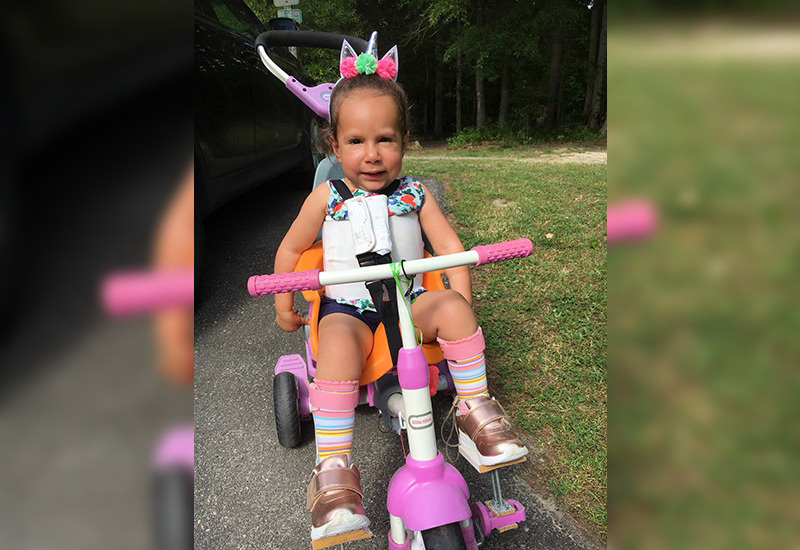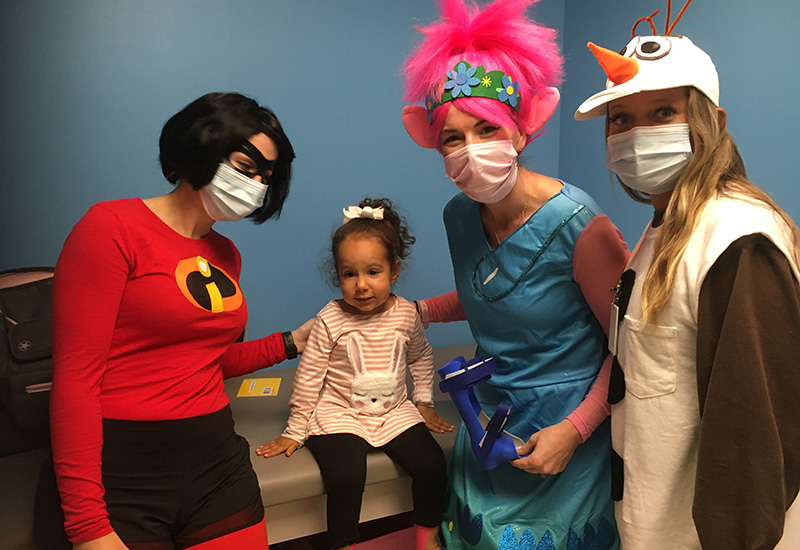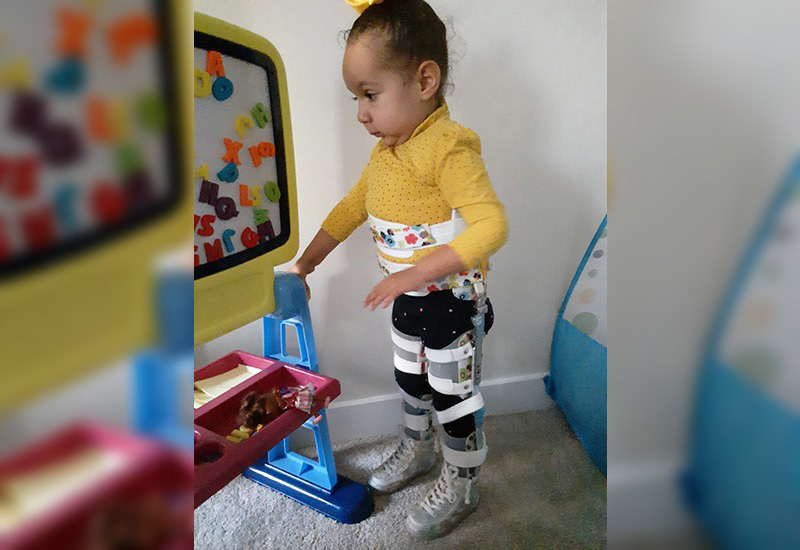Rare and Resilient: Maya’s Journey with SMA
Posted on

At 4 months old, Maya had not rolled over the way other babies do. Her mom, Gislane Lima, a nurse, knew something wasn’t right. Maya was referred to a neurologist. In the exam room, Gislane observed and listened as the doctors spoke to one another in hushed tones: “Classic symptoms of SMA” — an acronym she’d never heard. Outside, in the parking lot, in the harsh light of a Summer day, she Googled SMA. “It took my breath away,” she says.
SMA stands for spinal muscular atrophy, a rare gene defect that destroys motor neurons, the nerve cells that control movements like breathing and swallowing. In its severest form (type 1), it affects approximately 300 infants per year in the U.S., and until recently, for babies like Maya, there was little hope of survival.
Hope in the Form of a Clinical Trial
A week after the results came back confirming Maya’s SMA diagnosis, the Limas were on a plane to Italy, so Maya could undergo lifesaving gene therapy. The U.S. clinical trial sites were closed for enrollment, but there were still a few international trial sites recruiting patients. Fortunately, Maya met the requirements and was accepted into the trial.
In September of 2018, five days shy of her six-month birthday, she received a single-dose infusion of gene therapy, delivering a functional copy of the SMN1 gene to her cells. “We start seeing improvement pretty soon afterwards…within weeks,” says Gislane.
The Limas remained in Italy for 15 months for follow-up by the clinical trial team. The family’s final trip to Europe was in September 2019, just a few months shy of the pandemic shutdown.

Big Steps Forward — and Bracing — for Maya
Although gene therapy spares the motor neurons from continuing to die off, it cannot repair the damage already done. Upon returning home from Italy, Maya was referred to Ksenia Major, orthotist and clinical director at Boston O&P of Richmond, to be fitted for specialized medical equipment to help support her muscle weakness and prevent her spine curvature from worsening.
Maya was fitted for an ankle-foot orthoses (AFOs) to help stabilize her feet, a hip-knee-ankle-foot orthosis (HKAFOs) to addresses muscle weakness and instability in her hip knees and ankles, and a soft spinal orthosis (SSO) to cast her spine into a straighter position.
“Our entire team loves a day when Maya comes to visit,” Ksenia says. “She lights up the whole office with her singing, cruising and smiles. There are no limits for Maya. The minute we fit a brace we are immediately thinking how we can improve it the next go around.”
Gislane values the relationship she has built with Ksenia. “We just connected. She always comes up with different bracing ideas for Maya. And all the orthotics give her the ability to emulate things a typical kid would do — like standing.”

With the HKAFOs, the Limas were able to see their daughter stand for the first time. “It was really an emotional moment, she says. My little girl standing up. Kids with SMA type 1 don't usually stand. Being able to see her in that position was really meaningful to us.”
As she grows, her orthoses will continue to change, modifications will be made and different equipment will be added and taken away. “I don't think we currently have one piece of equipment exactly like the previous one,” Gislane says.
She finds comfort in knowing that Ksenia will always listen to her concerns and is accepting of her ideas. “She’s definitely a critical member of Maya’s care team.”

